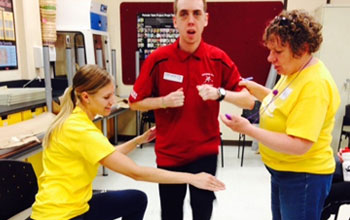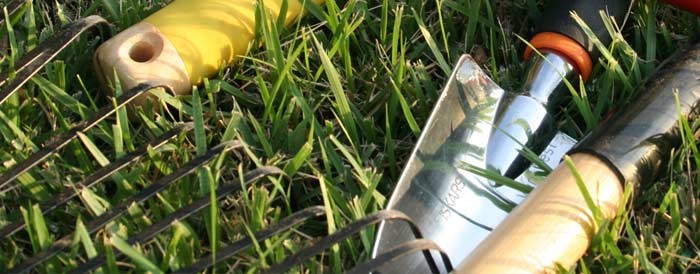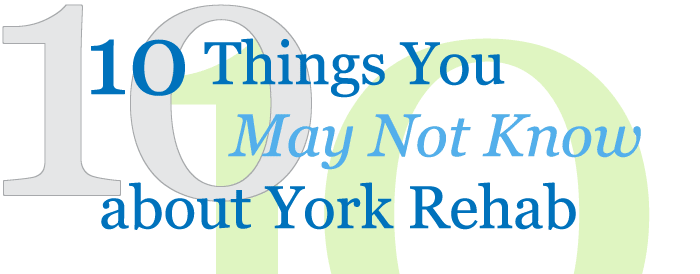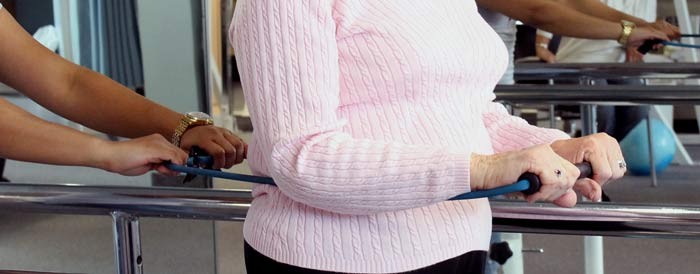Gardening IS Exercise Too
Gardening is usually looked at as a task instead of actual exercise, and the thought of it being the kind of activity with risk of injury is often the furthest thing from our mind. But GARDENING IS EXERCISE and can pose significant risk of injury due to stress on your shoulders, arms, back, hips and knees. Muscles and joints are also susceptible to due to the repetitive strain and extended periods of fixed positioning (kneeling, bending, etc.).
There are a few things that you can do to protect yourself from injury and as you prepare for your next gardening project:
1. Don’t rush…spread out the work: instead of trying to cram everything into one weekend, take two or three weekends to work on your project. Unlike those “DIY” TV Shows that have teams in the background working to turn around a big project in a couple days…you don’t have that same support so don’t aim for an overnight transformation.
2. Warm up before activity: gentle stretches and movement mimicking the type of activity you’re about to perform is an excellent way of preparing your body for the upcoming work session.
3. Use the right tools: finding tools that are ergonomic can help to relieve some of the stress on joints and muscles. Look for tools that have padded handles and spring-action features (i.e. self opening sheers). Gardening gloves with a rubber grip are also recommended. Such gloves produce a better grip, allowing less effort when holding tools which reduces muscle strain.
4. Remember technique: don’t discount the benefits proper of technique…it can make a job much easier. When lifting heaving objects (flower pot, bags of soil, decorative stones, etc.), remember to lift with your legs (not your back). And when doing repetitive work like raking, remember to keep feet shoulder width apart, use your shoulders as much as possible(and minimize bending your back), switch leg and arm positions regularly and avoid twisting your body (reposition your feet in the direction you’re extending).
The whole idea behind a beautiful garden is that you get to spend time it – the last thing you want is to be stuck inside recovering from a preventable injury. So remember these points to keep away from injury. Happy gardening!
10 Things You May Not Know
- We have been providing excellent care in the community for more than 19 years.
- You do not need a doctor referral to see anyone at our Clinic;
- We are a multi-faceted clinic that provides physio, acupuncture, chiropody (feet) and massage therapy;
- We run Yoga Classes through our fitness studio;
- We teach Nordixx pole walking for Free – join our walking group every Wednesday;
- We can correct foot pain with orthotics;
- Your private insurance will often cover our services;
- We can refurbish/repair most of your used orthotics;
- We can conduct Fitness Workshops for groups and we publish a monthly Activity Guide with ideas on how to keep active;
- Your visits are always 1-on-1 with a therapist – we do not use Physio Assistants;
Living Well After A Stroke
The number of people having a stroke in Canada is increasing each year and it’s not just the elderly who are at risk. In practice we are seeing more and more young people surviving a stroke. Some stroke statistics:
- Every seven minutes a Canadian dies of heart disease or stroke;
- 80% of Canadians have at least one of the risk factors for heart and/or vascular disease;
- In 2009, about 315,000 Canadians living in the community reported that they had suffered from the effects of a stroke.
1. WHAT IS A STROKE?
Stroke is a “brain attack” caused by a disturbance of the blood supply to the brain.
2. TYPES OF STROKE
There are two main types of stroke. ISCHAEMIC STROKE is the most common. It’s caused by a clot narrowing, or blocking blood vessels so that the blood cannot reach a particular area of the brain. The lack of oxygen supply leads to the death of brain cells. HAEMORRHAGIC STROKE occurs when a weakened blood vessel in the brain bursts. This produces bleeding in the brain and therefore, damage. Sometimes surgery is necessary in these cases. MINI STROKE – also known as TIA (TRANSIENT ISCHAEMIC ATTACK) – is similar to a stroke and has the same signs, but gets better within 24 hours. However, it must be seen as a warning sign of a more serious stroke in the future and must also be treated as a medical emergency.
3. SIGNS AND SYMPTOMS OF A STROKE
By being aware of the signs and symptoms of a stroke, you could save the life of a family member, a friend or someone in your community. ACT F.A.S.T!
FACE – can the person smile? Is one side of the face drooping?
ARMS – can the person raise both arms?
SPEECH – is their speech slurred?
TIME – time to call 911 right away if you see any one of these signs.
Act FAST because the quicker you act, the more completely the person may be able to recover!
4. RISK FACTORS
Medical conditions: high blood pressure, high cholesterol, atrial fibrillation, diabetes.Lifestyle: smoking, physical inactivity, being overweight, poor diet, stress.
5. WHAT HAPPENS AFTER A STROKE?
Depending on the area of the brain affected and the type of stroke, patients will have different results. The most common physical effect, and the one best known to the public, is decreased mobility of one side of the body. As with any brain injury, patients will present generalized fatigue and decreased ability to cope with everyday activities. Patients may also have speech and cognitive impairments that can be addressed in a multidisciplinary treatment approach.
6. HOW CAN A PHYSIOTHERAPIST HELP A STROKE SURVIVOR?
Physiotherapy looks at the physical aspects of health. A Registered Physiotherapist can help stroke survivors increase their mobility, independence and overall endurance. A Registered Physiotherapist will perform a complete assessment to understand the impairments and functional mobility status and will tailor a rehabilitation program. Reducing the risk of falls, and making the person safer and able to move independently, are primary goals after a stroke. We can help you to live well!
Staff attend Concussion Course – Returning to Sport After Injury
Topics included current techniques for the treatment of concussions and how to help people return to sport after injury. Course was organized by the Orthopeadics division of the Ontario Physiotherapy Association. Lecturers included Dr. Chantal Vaidyanath, a physiatrist who works with Toronto Rehabilitation Institute, St. Michaels Hospital and Synergy Sports Medicine and Rehabilitation, specializing in treating patients with Traumatic Brain Injuries. Dr. Michael Hutchison, Director of the Concussion Program at the David L MacIntosh Sports Medicine Clinic and an Associate Professor at U of T. And Jacque van Irssel, a physiotherapist and PhD Student with U of O who has extensive experience treating patients with concussion. She is also an educator of physiotherapists on the management of post concussion symptoms.
Volunteering for Special Olympics Event
 On Saturday May 2nd, Ann Botham (Managing partner, on right) volunteered for in a Special Olympics event. As a physiotherapist she completed fitness tests for the athletes. The athletes came from all over the world. Participating in the event was a lot of fun. There were other physiotherapists and students of physiotherapy participating in the day.
On Saturday May 2nd, Ann Botham (Managing partner, on right) volunteered for in a Special Olympics event. As a physiotherapist she completed fitness tests for the athletes. The athletes came from all over the world. Participating in the event was a lot of fun. There were other physiotherapists and students of physiotherapy participating in the day.




